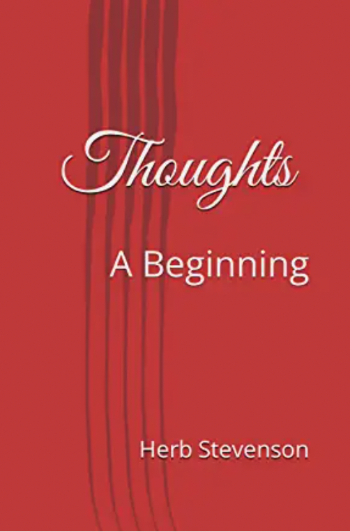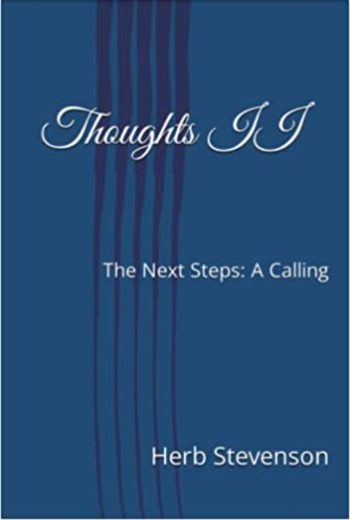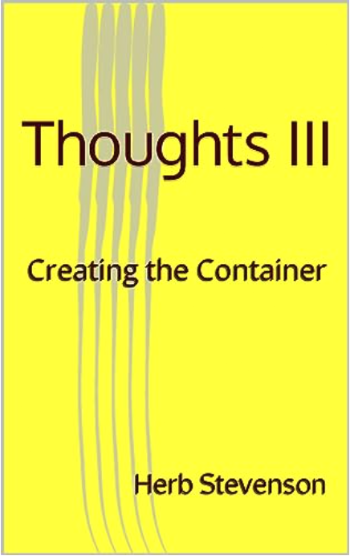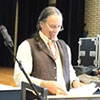

A book by Herb Stevenson, Volume 1. Learn more on Amazon.
Thoughts II:
The Next Step: A Calling

Volume 2 of 3. Learn more on Amazon.
Thoughts III:
Creating The Container

Volume 3 of 3. Learn more on Amazon.
To Lead
Read the article about training with Herb Stevenson in ALN Magazine.
See the article...
Built to Last and
Good to Great Organizations
Jim Collins created the "good to great" framework for organizations in Good to Great and created the fourth Stage with Jerry Porras in Built to Last. The framework consists of four stages:
Stage 1: Disciplined People: Level 5 Leadership & the Right People
Disciplined people is a combination of organizational and leadership maturity.
Developmentally, "good to great" leaders realize that the business is built and operates based on it people, in particular, its leadership. Therefore there is a great deal of humility and professional will. The humility is based on the deep knowing that the organization thrives when unified around common goals and values. Force typically cannot sustain success. Professional will is realizing that the job of the CEO and the community of leadership is to initiate, create, and sustain order surrounding a clear and shared compelling future that emerged from the community of leadership instead of being forced upon them.
As a community of leadership, the core of leadership is embedded in the people as well as the organization. This shows up in what is the focus of the leaders' attention.
Level four leaders tend to get caught up in content, an expert or hero perspective, wherein the existing leaders assume they have (or are supposed to have) the answer. Hence they first focus on "what" is the vision, the problem, the solution, then they retrofit the existing people to create, solve, or implement the preconceived notions of what to do next. Nothing is done to acknowledge that you most likely cannot change, solve, or correct the situation with the same people, skills, thinking, logic, and maturity that created the debacle or mediocrity.
Level five leaders examine the organization in terms of core competencies, and as Collins states, efforts are made to get the right people on the bus, ensuring that a superior executive team is created. He defines the right people via the following six characteristics.
The right people:
- fit with the company's core values of what is the work.
- don't need to be tightly managed.
- understand that they do not have "jobs", rather they have responsibilities.
- fulfill their commitments.
- are passionate about the company and its work.
- display "window and mirror" maturity
Most importantly, it is after getting the right people in the organization that the community of leadership begins to define what to do.
Stage 2: Disciplined Thought: Facing Brutal Facts & Creating Hedgehogs
Stage 2 in some ways separates the wheat from the chaff. First, "good to great" organizations confront the brutal facts while staying focused on the shared compelling picture of what is the work. This unwavering faith in the potential for success while staying fully anchored in the facts of the situation allows an organic response towards success.
In addition, stage two is unified around the shared compelling picture that enables coherent decisions to be made throughout the organization. Collins refers to this as the "hedgehog concept" that is comprised of three intersecting circles: (1) what you can be best in the world at, (2) what you are deeply passionate about, and (3) what best drives your economic or resource engine. Therefore disciplined thought is like having one eye on "what is" and the other eye on "what could be" to guide all decisions. Rarely is "what was" allowed to be a determining factor because it is like a "black hole" that can destroy all creative thought and action.
Stage 3: Disciplined Action: Culture of Discipline & Flywheels
Disciplined action involves a "culture of discipline" and the "flywheel" that provides the momentum of the organization's success. Culture is like water to a fish. Hence a culture of discipline is a life sustaining force within the organization that feeds and is fed by every person in the organization and therefore is self-sustaining. I referred to this phenomenon as a community of leadership in the prior paragraphs because a culture of discipline creates a community of leadership. When disciplined action does not exist, outside influence must be injected to keep the organization functioning and focused; typically, leadership has to spend all of its time putting out fires and redirecting "the work".
The "flywheel" is the harnessed energy of continuous improvement leading to visible results leading to more excitement and participation based on the shared compelling picture of why the organization exists. Where a Community of Leadership has been created by a culture of discipline, a flywheel of momentum will exist. It is the transformation of pure and often latent energy into focused attention and work. Without it, the organization will be fragmented at best and frenetically falling apart at worst.
Stage 4: Building Greatness to Last: Clock Building & Stimulating Progress
The last stage of the "Good to Great" framework relates to "clock building, not telling time" and "preserving the core while stimulating progress". Great organizations are the result of focusing on the organization's greatness and not the leaders or individual's legacy. Developmentally, it is the difference between the leaders that advocate the "great man" versus those that advocate the great organization. The latter understands that leadership comes from within the organization not from within a single person. Similarly, great organizations initiate, create, and sustain their core values as a foundation from which to build a continuously changing organization.
To assess your organization, go to www.jimcollins.com/tools/diagnostic-tool.pdf for a free diagnostic tool by Jim Collins
We Appreciate Your Feedback
Please let us know if you found this article interesting or useful. We will not submit this information to any third parties.

